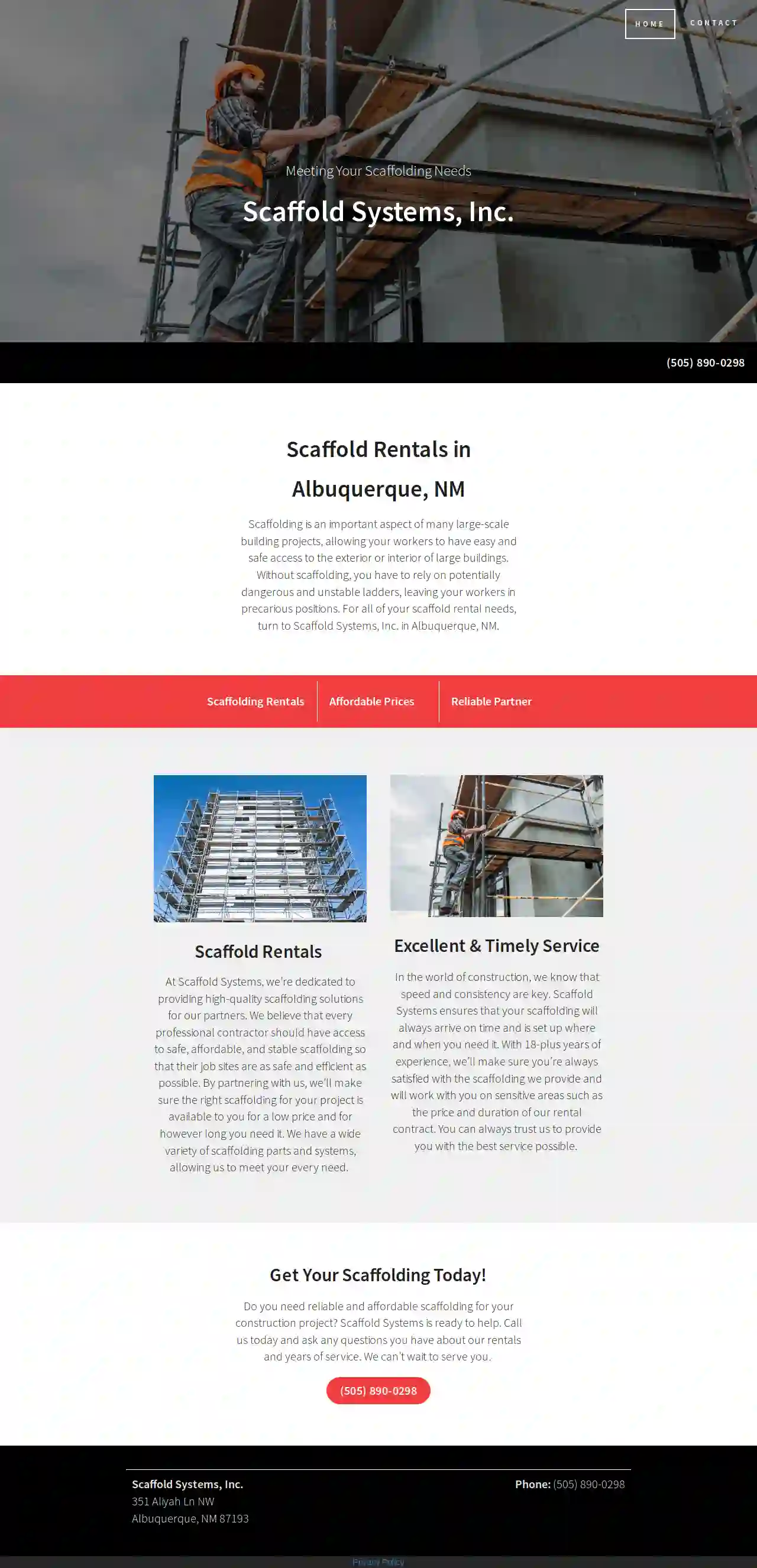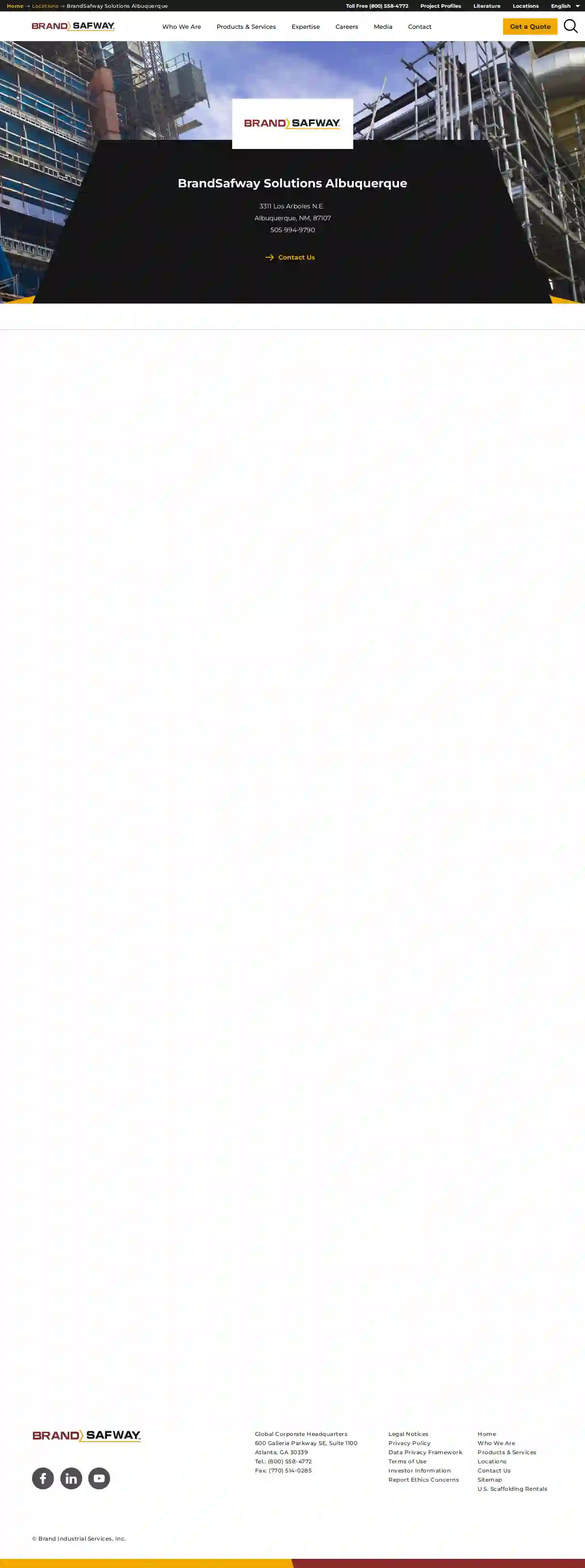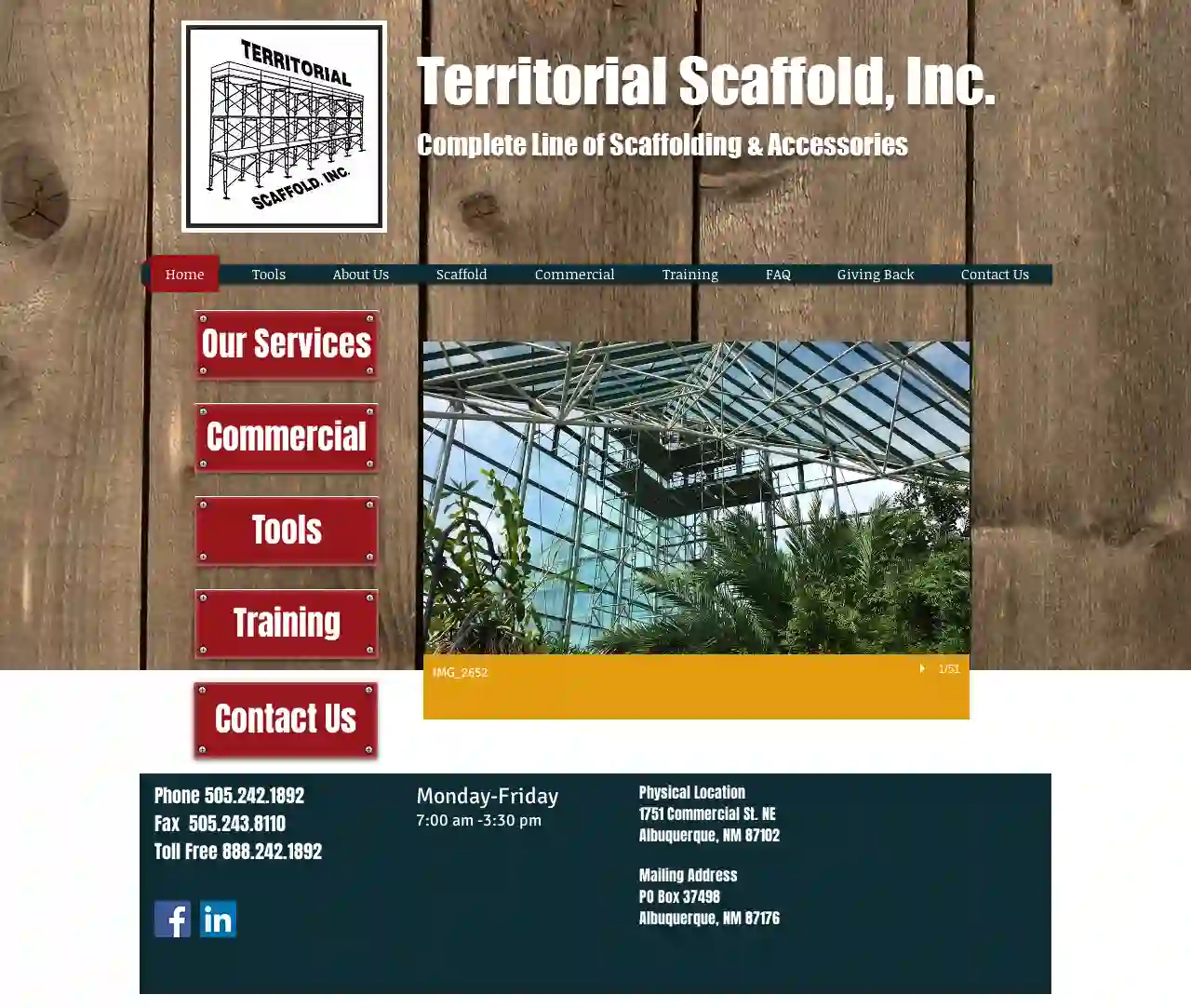Scaffolding Rental South Valley
Find top Affordable Scaffolding Rental in South Valley
Get multiple Scaffolding Rental quotes for your project today! Compare profiles, reviews, accreditations, portfolio, etc... and choose the best deal.

Scaffold Systems Inc
36 reviews351 Aliyah Ln NW, Albuquerque, 87193, USScaffold Systems, Inc. is a dedicated provider of affordable and convenient scaffolding rentals to contractors and homeowners in Albuquerque, NM. With nearly two decades of experience, they offer a wide variety of scaffolding parts and systems to meet every need. Their commitment to safety, efficiency, and customer satisfaction sets them apart as a reliable partner for construction projects.
- Services
- Why Us?
- Gallery
Get Quote
BrandSafway Solutions Albuquerque
4.18 reviews1234 BrandSafway Blvd, Albuquerque, 87102, USBrandSafway is a leading provider of access solutions, including scaffolding, aerial work platforms, and forming and shoring equipment. With a strong commitment to safety, quality, and customer satisfaction, BrandSafway offers a wide range of services tailored to meet the unique needs of clients across various industries. Their team of experienced professionals works closely with clients to understand their requirements and deliver customized solutions that enhance efficiency and productivity. BrandSafway's mission is to provide innovative access solutions that ensure safe and efficient project execution, while maintaining a focus on sustainability and environmental responsibility.
- Services
- Why Us?
- Accreditations
- Our Team
- Testimonials
Get Quote
Territorial Scaffold Inc
4.725 reviewsTerritorial Scaffold, Inc., Albuquerque, NM, 1751 Commercial St. NE, 87102, USTerritorial Scaffold, Inc. is a leading provider of scaffolding and accessories, offering a comprehensive range of services including commercial scaffolding, training, and more. With a strong commitment to quality and customer satisfaction, the company operates from its physical location at 1751 Commercial St. NE, Albuquerque, NM 87102, and can be contacted via phone at 505.242.1892, fax at 505.243.8110, or toll-free at 888.242.1892. The business is open Monday through Friday from 7:00 am to 3:30 pm.
- Services
- Why Us?
- Accreditations
- Our Team
- Testimonials
- Gallery
Get Quote- Al
All American Scaffold & Shoring
11 reviewsAlbuquerque, US- Services
- Why Us?
Get Quote
Over 2,353+ Scaffolding Contractors registered
Our scaffolding companies operate in South Valley and surrounding areas!
ScaffoldingHQ has curated and vetted the Best Scaffolding Contractors in and around South Valley. Find the most trustworthy pro today.
Frequently Asked Questions About Scaffolding Rental
- General Liability Insurance: Provides coverage if someone is injured or property is damaged due to your use of the scaffolding.
- Worker's Compensation Insurance (if you have employees): Covers medical expenses and lost wages for employees injured while working on the scaffolding.
- All Components: Ensure all the necessary components (tubes, clamps, boards, braces, etc.) are present and in good condition.
- Damage or Defects: Look for any signs of damage, rust, or defects on the scaffolding parts.
- Scaffolding Tag: Verify that the scaffolding tag is up-to-date and shows the last inspection date.
- Safety Features: Check that guardrails, toeboards, and other safety features are included and in working order.
- Online Directories: ScaffoldingHQ is a specialized directory that connects you with reputable rental providers.
- Search Engines: Search for 'scaffolding rental [your location]' on Google or other search engines.
- Local Business Listings: Check local business listings, such as Yelp or Yellow Pages, for scaffolding rental companies.
- Word-of-Mouth Referrals: Ask contractors, builders, or friends for recommendations.
- Base Plates and Adjusters: Use adjustable base plates to level the scaffolding legs on uneven surfaces.
- Ground Preparation: Level the ground as much as possible before erection.
- Bracing and Support: Additional bracing and support may be necessary to compensate for uneven ground conditions.
- Professional Assessment: A qualified scaffolding erector should assess the ground and determine the appropriate measures for safe erection.
Do I need insurance to rent scaffolding?
What should I check for when the scaffolding is delivered?
How do I find scaffolding rental companies near me?
Can I use scaffolding on uneven ground?
Do I need insurance to rent scaffolding?
- General Liability Insurance: Provides coverage if someone is injured or property is damaged due to your use of the scaffolding.
- Worker's Compensation Insurance (if you have employees): Covers medical expenses and lost wages for employees injured while working on the scaffolding.
What should I check for when the scaffolding is delivered?
- All Components: Ensure all the necessary components (tubes, clamps, boards, braces, etc.) are present and in good condition.
- Damage or Defects: Look for any signs of damage, rust, or defects on the scaffolding parts.
- Scaffolding Tag: Verify that the scaffolding tag is up-to-date and shows the last inspection date.
- Safety Features: Check that guardrails, toeboards, and other safety features are included and in working order.
How do I find scaffolding rental companies near me?
- Online Directories: ScaffoldingHQ is a specialized directory that connects you with reputable rental providers.
- Search Engines: Search for 'scaffolding rental [your location]' on Google or other search engines.
- Local Business Listings: Check local business listings, such as Yelp or Yellow Pages, for scaffolding rental companies.
- Word-of-Mouth Referrals: Ask contractors, builders, or friends for recommendations.
Can I use scaffolding on uneven ground?
- Base Plates and Adjusters: Use adjustable base plates to level the scaffolding legs on uneven surfaces.
- Ground Preparation: Level the ground as much as possible before erection.
- Bracing and Support: Additional bracing and support may be necessary to compensate for uneven ground conditions.
- Professional Assessment: A qualified scaffolding erector should assess the ground and determine the appropriate measures for safe erection.